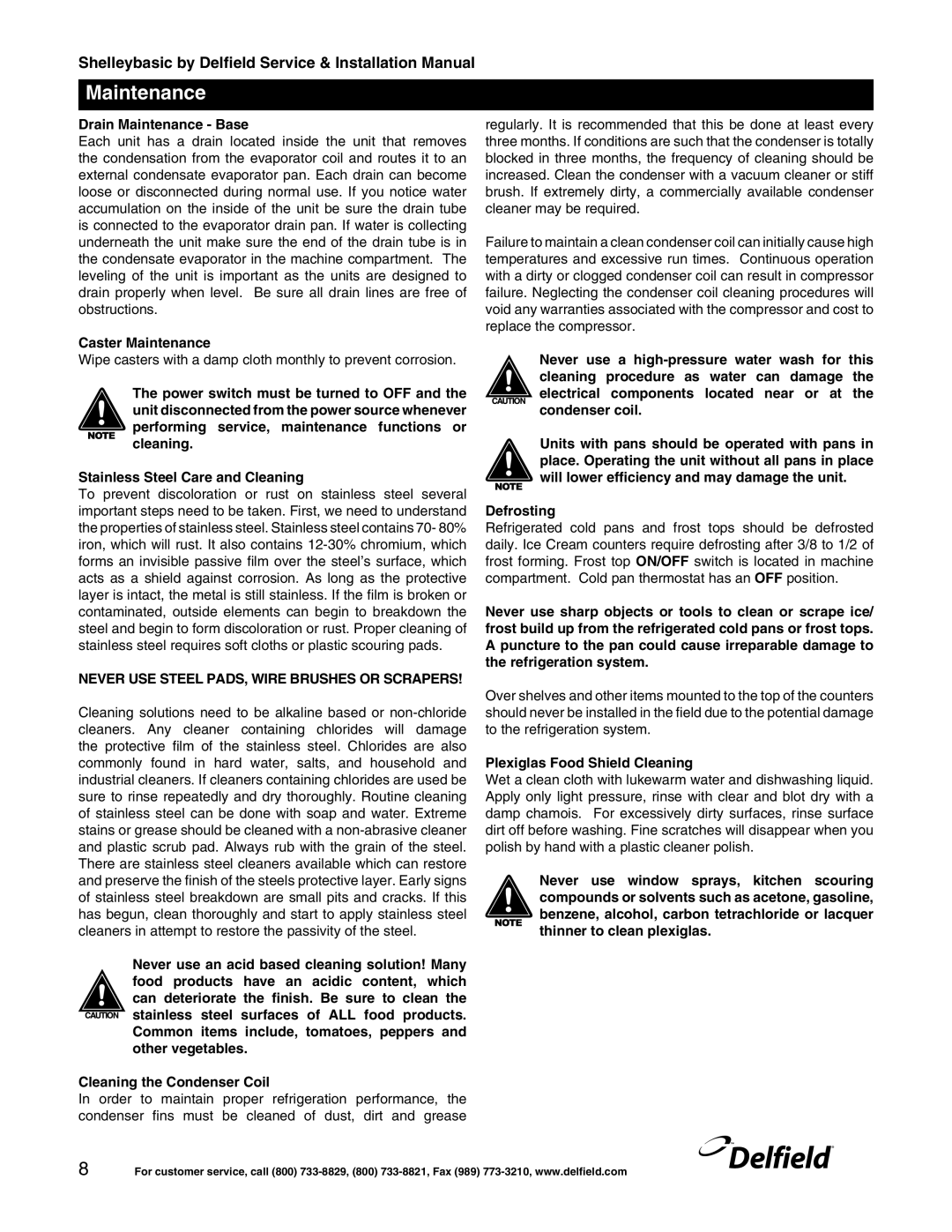Shelleybasic specifications
Delfield Shelleybasic is a renowned brand in the world of commercial kitchen equipment, best known for its high-quality refrigeration solutions. Designed primarily for the foodservice industry, the Delfield Shelleybasic line features a variety of products that prioritize efficiency, performance, and durability. These refrigeration units are ideal for restaurants, cafes, and catering services that require reliable storage for perishable items.One of the main features of Delfield Shelleybasic refrigeration units is their exceptional temperature control. These units are equipped with advanced digital thermostats, allowing users to monitor and adjust temperatures easily, ensuring that food is stored at safe and optimal levels. This precise temperature management helps to extend the shelf life of ingredients and maintain their quality, a crucial factor in the foodservice industry.
Another standout characteristic of Delfield Shelleybasic products is their energy efficiency. The line often incorporates eco-friendly technologies that not only reduce energy consumption but also lower operating costs. By utilizing advanced insulation materials and high-efficiency compressors, these units minimize energy loss, making them environmentally friendly options for businesses looking to reduce their carbon footprint.
In terms of design, Delfield Shelleybasic refrigeration units boast a sleek and professional appearance that fits well into any kitchen environment. The stainless-steel construction provides durability, making the products resistant to wear and tear, as well as easy to clean. This is particularly important in commercial settings where hygiene and appearance are paramount.
Delfield Shelleybasic also offers a variety of sizes and configurations to accommodate different kitchen layouts and storage needs. From reach-in refrigerators and freezers to under-counter models, businesses can select the ideal unit that meets their specific requirements. Additionally, some models feature customizable shelving options, allowing for better organization of various food items.
To enhance usability, Delfield Shelleybasic units come equipped with user-friendly controls and features, such as LED lighting for improved visibility inside the refrigerators and freezers. The brand also focuses on providing reliable customer support and easy access to replacement parts, ensuring that businesses can maintain their equipment with minimal downtime.
In summary, Delfield Shelleybasic refrigeration solutions combine advanced technology, energy efficiency, durability, and professional design, making them suitable for any foodservice establishment. As businesses look to prioritize quality in their kitchen operations, Delfield Shelleybasic continues to be a trusted choice for commercial refrigeration needs.

